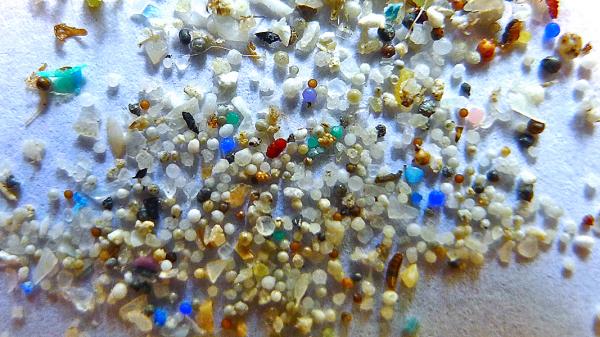New study shows concentrations of microplastics in drinking water are much higher than expected
12 Jan 2024 by The Water Diplomat

A study published on the 8th of January in the Proceedings of the National Academy of Sciences has shown that the concentration of micro- and nano- plastic particles in drinking water is serval orders of magnitude higher than expected. While previous studies had showed that concentrations of plastic particles in drinking water can vary greatly and can contain anything between 0 and 10,000 microplastic particles, the current study has included nanoplastics and indicates that a litre of water may contain up to 250,000 plastic particles. Microplastic particles are particles whose diameter varies between 1 micrometer and 3 mm, while nanoplastics are smaller, having a diameter of less than 1 micrometer. These particles are difficult to detect and identify as plastic or assess their chemistry, but the researchers combined imaging techniques with algorithms that enabled both their identification as plastic and a fairly specific analysis of their chemistry.
More than 8300 million metric tonnes of plastics have been produced globally, of which some 75% ends up as waste. Some of it is already in the form of microbeads used in health and beauty products, and a much of the rest of the plastic is gradually converted to microplastics by breaking apart in the environment. Some examples of land-based sources of microplastics include the breakdown of road marking paints and tyre debris, plastic fibres released by textiles, especially during washing, and dust in cities produced by the soles of shoes and artificial surfaces. In the case of wastewater, the washing of synthetic textiles, the use of cosmetic microbeads, and the disposal of other plastic waste through the sewer systems results in the loading of effluent with microplastics from domestic sources. Similarly, industrial water use contributes to the loading of microplastics into wastewater. Removal of these microplastics is therefore highly dependent on the presence and effective operation of wastewater treatment plants. Conventional wastewater treatment plants with primary and secondary treatment processes are capable of removing between 80% and 98% of microplastics, and there are secondary and tertiary treatment processes in existence that can remove up to 99.9% of these particles.
Microplastics are now found everywhere in the environment and have been found in different concentrations in natural water bodies, in drinking water, in our food and in the air we breathe. Health concerns have been raised about microplastics in the past, and in 2019 the World Health Organisation published a review of the existing evidence. The WHO study came to the conclusion that there are three sources of hazard: the physical hazard caused by the particles, a chemical hazard caused by the kinds of chemicals used to produce the plastics, and a microbial hazard caused by microorganisms that attach themselves to the plastics. Although it was difficult to provide conclusive results, partly because of the huge diversity in the origin of the particles themselves, the WHO concluded that the chemical and microbial risks appeared to be low. The risks that exist appear to stem primarily from physical particles and although few relevant studies have been carried out, those that exist seem to show that the plastics are only toxic at high levels of ingestion. However, while microplastics will usually pass through the digestive system without being absorbed into the body, nanoplastics are believed to be more toxic since their smaller size renders them much more amenable to enter the human body.
